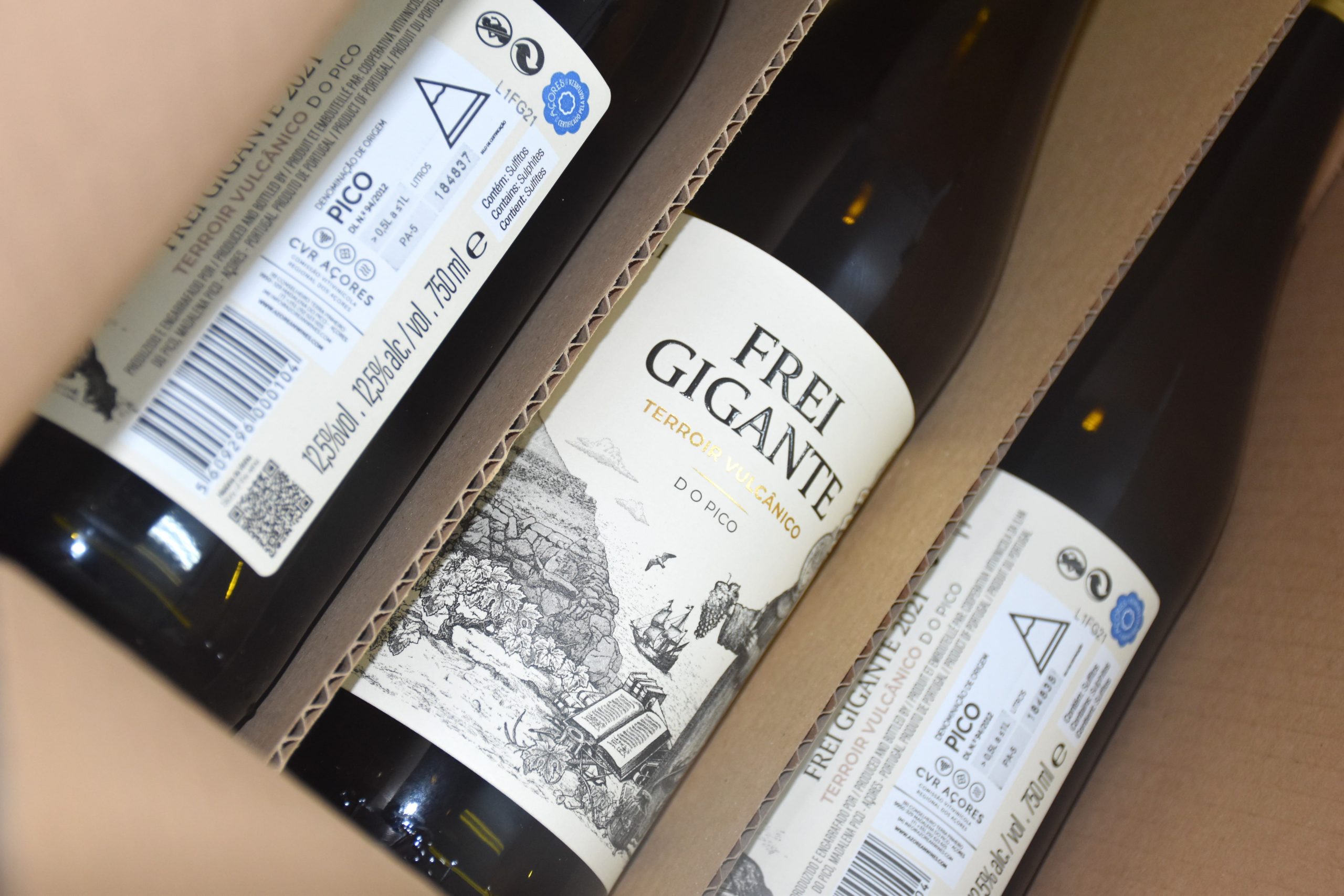
Frei Gigante with new image
14/12/2023Frei Gigante, one of the oldest brands of the Cooperativa Vitivinícola on the island of Pico – Picowines has a new image. The 2021 harvest, of this certified wine with designation of origin, now appears on the market completely renewed, with an image that, in fact, tells the story and adventure of this wine, combining tradition with the innovation that characterizes it. Its name pays homage to the first known historical personality who, in 1460, when the island was colonized, brought the first vines and made the first experiences of wine production sites: «O Frei Gigante, a blend of the three Arinto dos Açores monovarieties , Verdelho and Terrantez do Pico, is the cooperative’s flagship wine when we talk about native grape varieties and what represents the essence of Pico wines. It is a wine that is not limited to grapes and fermentations, it tells a story and its adventure, combining tradition with innovation», says Losménio Goulart, President of the Pico Island Wine Cooperative – Picowines.
For his part, Bernardo Cabral, consulting oenologist at Picowines highlights «minerality, salinity and acidity as striking characteristics in Azorean wines, especially those produced on the island of Pico, and a unique and singular terroir marked by volcanic soils and the strong influence of the Atlantic , which makes us have wines of excellence. We intend to have genuine and little worked wines».
The graphic elements on the label of the new image of the Giant Friar tell its history and origin. Among several symbols, the image of the island of Pico stands out, the compass that aims to represent the role of Frei Gigante in the discovery of grape varieties and ways of implementing vineyards on the island, the Portuguese caravel that represents the grape varieties brought from the Mediterranean islands, Verdelho, the most traditional and emblematic grape variety in the region or even the initials of its real name: Pedro Frei Gigante.
The new image of the Giant Friar tells a story. Legend has it that Pedro Frei Gigante then brought the first vines to Pico, at the beginning of the island’s colonization, carrying out the first wine production experiments on black stone floors protected by basalt walls, which today characterize the second largest island in the Azores Archipelago. The Franciscans helped people work and invent ways to improve ‘real’ lives. There was an interest beyond the religious that the evolution of the people of Pico truly happened. The introduction of vineyard planting was led on the island of Pico by Franciscan friars who early recognized the existence of suitable climatic conditions for wine production. They worked as a family and knew that there were lands in the Mediterranean areas similar to those in Pico where there were vineyards. Frei Gigante was a Franciscan and played a leading role in the planting of vineyards in the Mediterranean, through sharing his knowledge.
The first plants were brought from the Mediterranean islands. The variety that gained preference due to its productivity and quality of the wines produced was Verdelho. Azorean history often mentions that the first plants were brought from Sicily, the characteristics of the vineyard and the dynamics of settlement and trade at the time point to the Canaries. After a slow start, liqueur wine became famous for its quality and at the end of the 17th century it was already exported to other islands and from the 18th century to most northern European countries.
